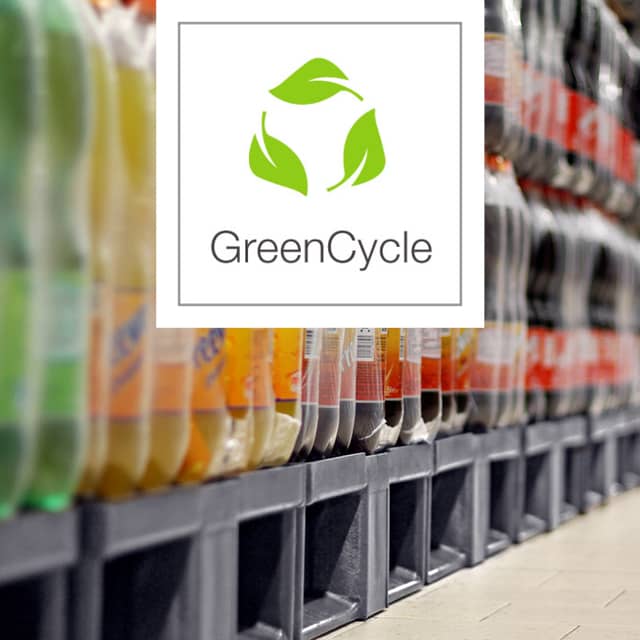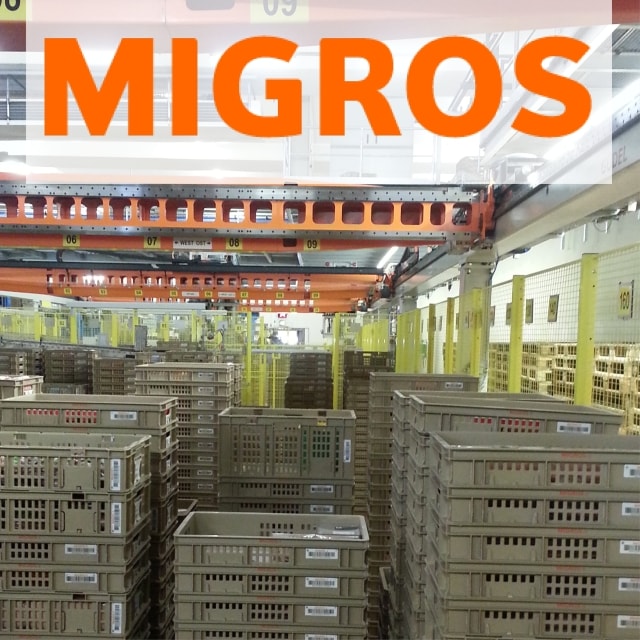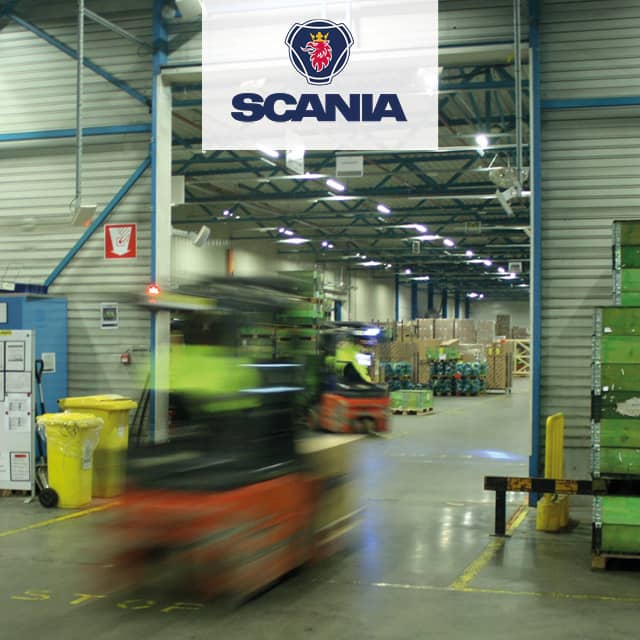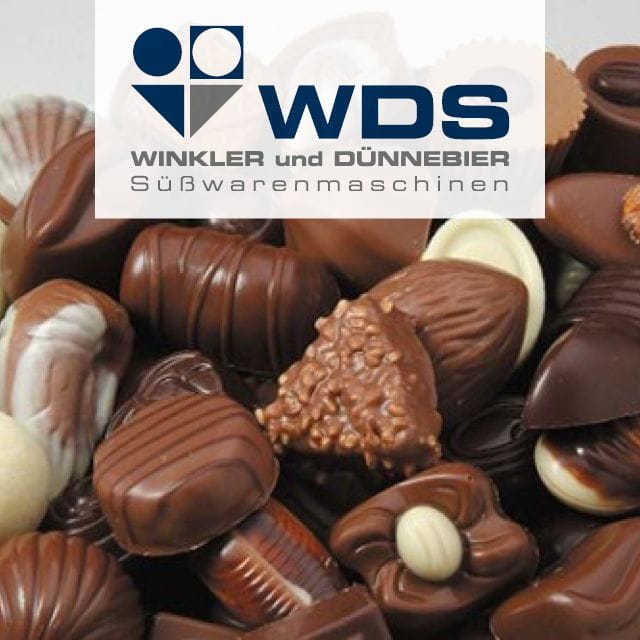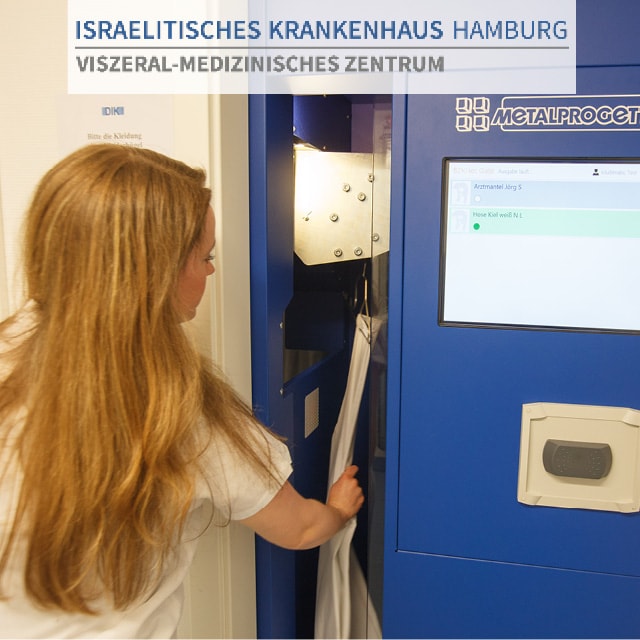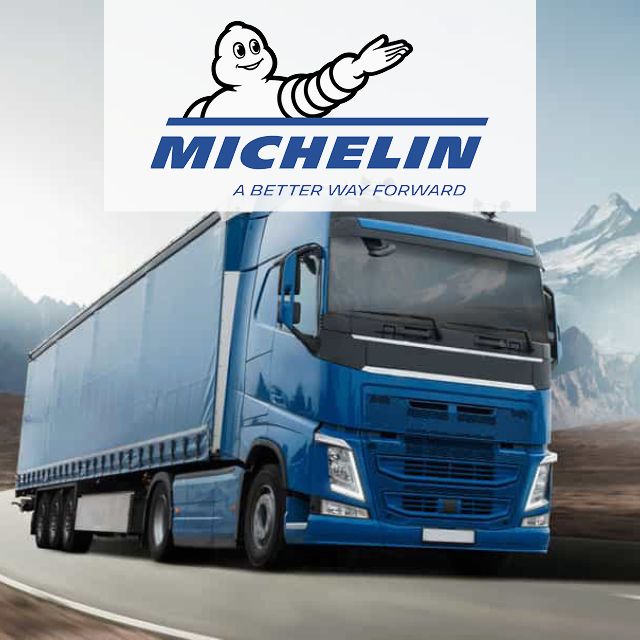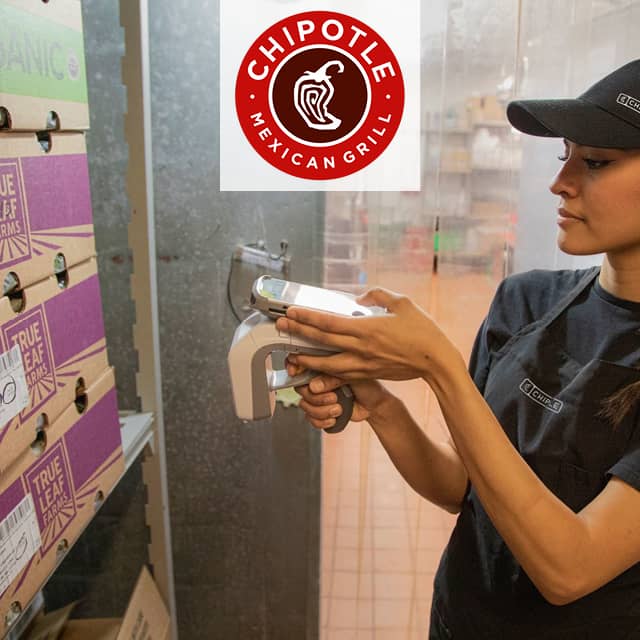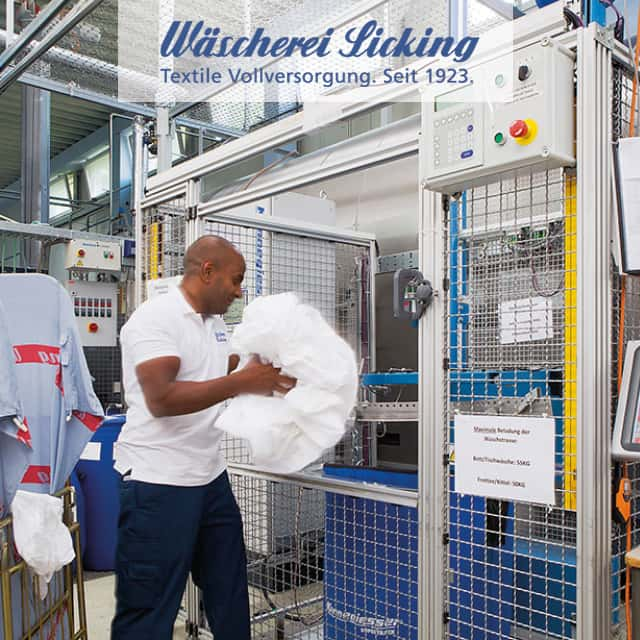
Workwear: UHF RFID in Laundry Companies
The laundry company Sicking has designed a complete system for optimized laundry processes. HF and UHF RFID-tagged textile items are transparently monitored and precisely localized. As a competitive advantage, the laundry company offers customers comprehensive data insight via web portal.
An in-house programmed software processes and analyzes all captured RFID data. A total of 440,000 tagged laundry items are monitored using RFID and the company's own software.
The family-owned company is part of the Servitex network and employs 60 people. The fleet includes a total of eight trucks that serve customers – from accommodation establishments and restaurants to care facilities – within a radius of up to 150 kilometers. Around twelve tons of laundry are processed every day.
Process Requirements
The workwear sector of the laundry company Sicking includes employee-specific sorting, packaging and individual delivery and collection of garments, as well as a comprehensive textile controlling. Over 90 percent of the workwear is already tagged, which corresponds to a total quantity of 19,000 individual items.
Growing individual customer requirements and laundry cycles call for optimized process control in the workwear sector. This includes outfitting with sorting according to employees, as well as the exact traceability of laundry processing. Machine utilization is to be optimized in the laundry company. At the same time, customers are granted comprehensive data insight as a competitive advantage.
Objectives
- Eliminate incorrect deliveries and redundant trips
- Provide customers with comprehensive data insights
- Control all in-house processes with RFID technology and capitalize on competitive advantages
Solution
The laundry company Sicking patches workwear items with RFID and offers customers tracking & tracing via web portal. The customer's own textiles can also be tagged by the laundry company on request. The technology integration took place in 2012 with HF-RFID. At the beginning of 2019, Sicking switched to UHF RFID. Until the complete changeover to UHF RFID, UHF and HF readers will both remain in parallel use. Via in-house software, RFID data is processed in all processes. The software solution covers the processes in merchandise management, production and logistics.
All RFID-tagged laundry items are captured at the point of incoming and outgoing goods. Workwear items are extracted and sorted individually via antennas integrated in the sorting tables. A display above the table informs the employee of the required wash program. Incorrect sorting is eliminated.
Machines no longer have to be set up for specific customers, and special items from different customers are processed together. The captured data from the RFID tags tells employees whether the laundry is sorted by employee, size or department for the point of outgoing goods – depending on customer requirements. Finally, the cleaned linen is banded with delivery instructions.
Customers have access to a web portal. All process data for each individual item can be accessed live. This includes the localization of the laundry items, number of cleaning cycles and listing of employee master data, departments and cabinet management.
This offers the customer the possibility to register new employees independently via web portal and to provide – already tagged clothes to the laundry company – from the laundry pool. The effort required to order new workwear for new employees is eliminated. Textiles from the customer's stock can thus be assigned to specific persons.
Customers can carry out their own evaluations of costs, departments and employees in the web portal. The high level of data transparency for each individual laundry item ensures exact allocation to cost centers and departments. The laundry company benefits from optimized logistics, as pre-sorting and goods sorting are time-optimized and virtually error-free.
The main advantage: Fewer friction points between customers and service providers as well as reduced mishandling and replacement trips. Shrinkage is precisely localized and inventory processes simplified. Competitive advantages arise, particularly in the workwear sector – which also offer increased advertising effectiveness – compared to laundry companies that operate without RFID technology.
Advantages
- Manual errors eliminated
- Reduced mishandling
- Optimized machine utilization
- Time-optimized goods control
- Increased data transparency
- Exact allocation to cost center and department
- Customers have access to live data
- Reduced effort for new orders
- Competitive advantage and increased advertising effectiveness
Outlook
- A fully automated sorting system is currently under construction
Learn More
Questions? Get in contact with the editorial team!
Technologies
Application Fields





